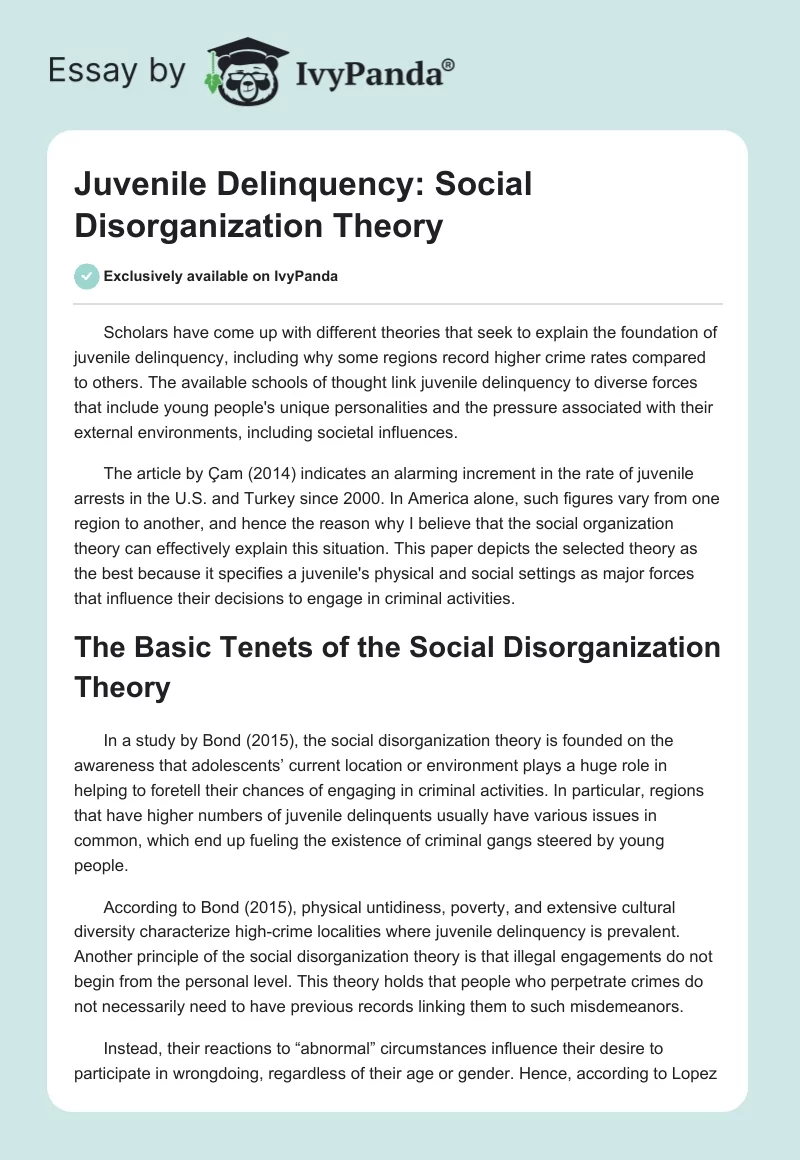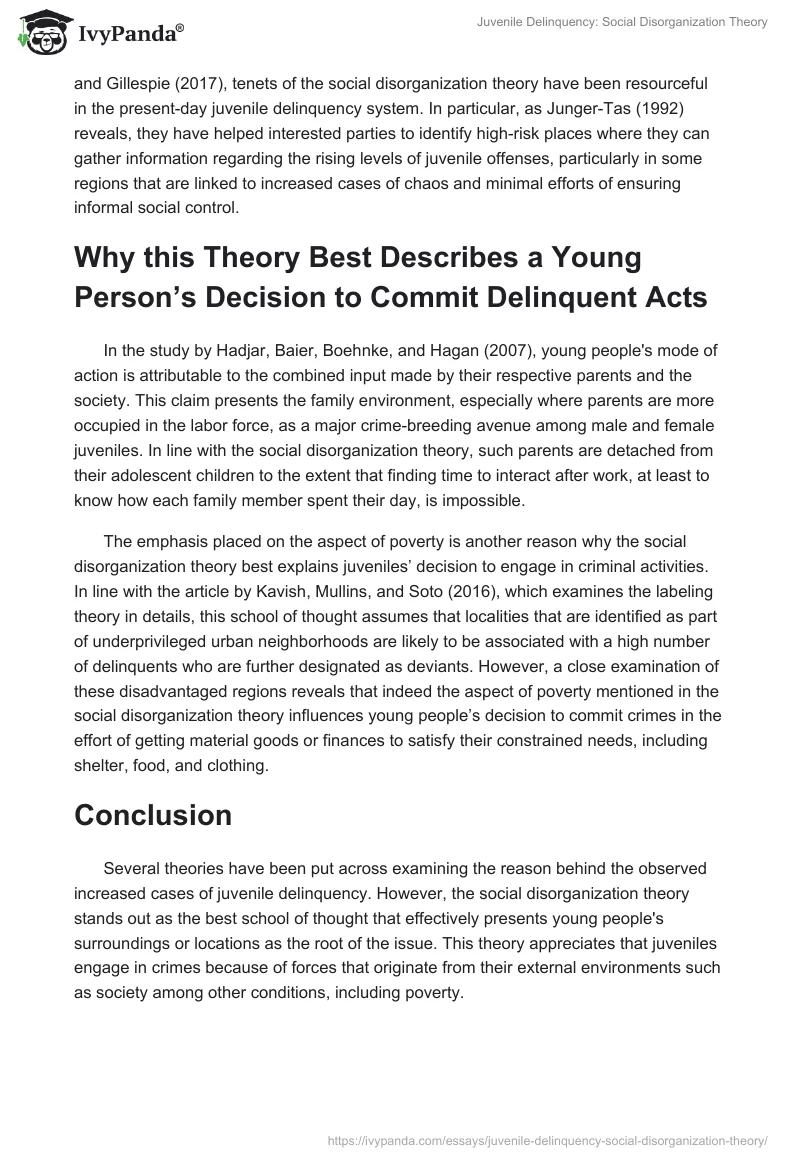Scholars have come up with different theories that seek to explain the foundation of juvenile delinquency, including why some regions record higher crime rates compared to others. The available schools of thought link juvenile delinquency to diverse forces that include young people’s unique personalities and the pressure associated with their external environments, including societal influences.
The article by Çam (2014) indicates an alarming increment in the rate of juvenile arrests in the U.S. and Turkey since 2000. In America alone, such figures vary from one region to another, and hence the reason why I believe that the social organization theory can effectively explain this situation. This paper depicts the selected theory as the best because it specifies a juvenile’s physical and social settings as major forces that influence their decisions to engage in criminal activities.
The Basic Tenets of the Social Disorganization Theory
In a study by Bond (2015), the social disorganization theory is founded on the awareness that adolescents’ current location or environment plays a huge role in helping to foretell their chances of engaging in criminal activities. In particular, regions that have higher numbers of juvenile delinquents usually have various issues in common, which end up fueling the existence of criminal gangs steered by young people.
According to Bond (2015), physical untidiness, poverty, and extensive cultural diversity characterize high-crime localities where juvenile delinquency is prevalent. Another principle of the social disorganization theory is that illegal engagements do not begin from the personal level. This theory holds that people who perpetrate crimes do not necessarily need to have previous records linking them to such misdemeanors.
Instead, their reactions to “abnormal” circumstances influence their desire to participate in wrongdoing, regardless of their age or gender. Hence, according to Lopez and Gillespie (2017), tenets of the social disorganization theory have been resourceful in the present-day juvenile delinquency system. In particular, as Junger-Tas (1992) reveals, they have helped interested parties to identify high-risk places where they can gather information regarding the rising levels of juvenile offenses, particularly in some regions that are linked to increased cases of chaos and minimal efforts of ensuring informal social control.
Why this Theory Best Describes a Young Person’s Decision to Commit Delinquent Acts
In the study by Hadjar, Baier, Boehnke, and Hagan (2007), young people’s mode of action is attributable to the combined input made by their respective parents and the society. This claim presents the family environment, especially where parents are more occupied in the labor force, as a major crime-breeding avenue among male and female juveniles. In line with the social disorganization theory, such parents are detached from their adolescent children to the extent that finding time to interact after work, at least to know how each family member spent their day, is impossible.
The emphasis placed on the aspect of poverty is another reason why the social disorganization theory best explains juveniles’ decision to engage in criminal activities. In line with the article by Kavish, Mullins, and Soto (2016), which examines the labeling theory in details, this school of thought assumes that localities that are identified as part of underprivileged urban neighborhoods are likely to be associated with a high number of delinquents who are further designated as deviants. However, a close examination of these disadvantaged regions reveals that indeed the aspect of poverty mentioned in the social disorganization theory influences young people’s decision to commit crimes in the effort of getting material goods or finances to satisfy their constrained needs, including shelter, food, and clothing.
Conclusion
Several theories have been put across examining the reason behind the observed increased cases of juvenile delinquency. However, the social disorganization theory stands out as the best school of thought that effectively presents young people’s surroundings or locations as the root of the issue. This theory appreciates that juveniles engage in crimes because of forces that originate from their external environments such as society among other conditions, including poverty.
References
Bond, M. (2015). Criminology: Social disorganization theory explained. Web.
Çam, T. (2014). Testing social disorganization theory for the causes of index (major) crime incidence among Turkish juveniles. Electronic Journal of Social Sciences, 13(51), 329-345.
Hadjar, A., Baier, D., Boehnke, K., & Hagan, J. (2007). Juvenile delinquency and gender revisited: The family and power-control theory reconceived. European Journal of Criminology, 4(1), 33-58.
Junger-Tas, J. (1992). An empirical test of social control theory. Journal of Quantitative Criminology, 8(1), 9-28.
Kavish, D. R., Mullins, C. W., & Soto, D. A. (2016). Interactionist labeling: Formal and informal labeling effects on juvenile delinquency. Crime & Delinquency, 62(10), 1313-1336.


